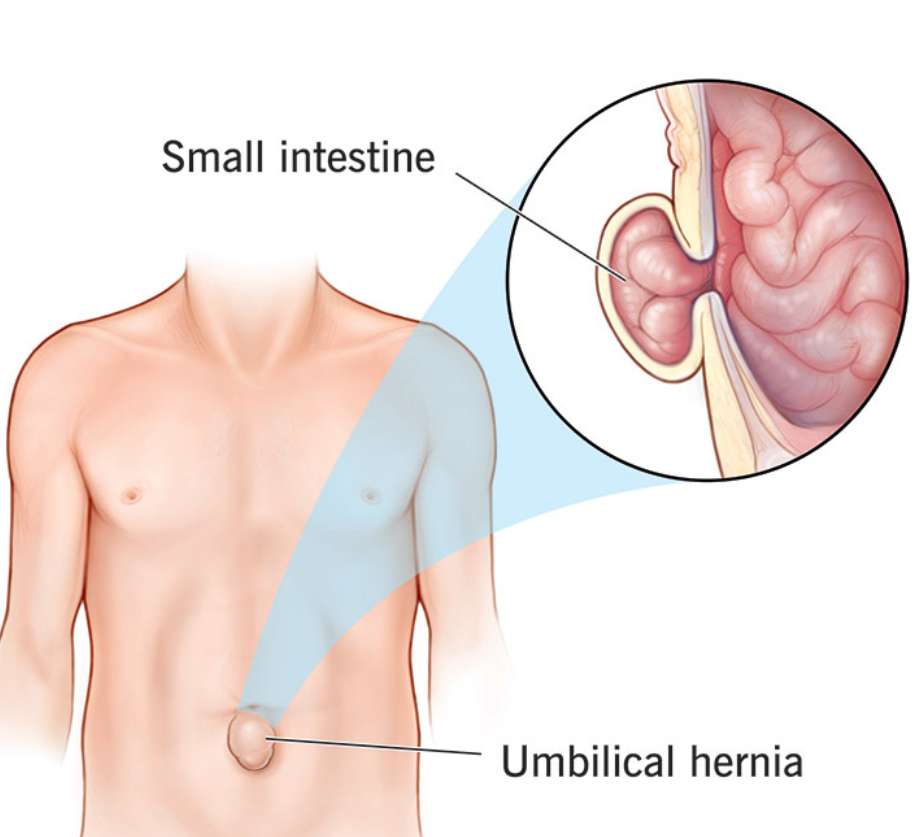
Umbilical Hernia
A weakening in the ligaments and muscles surrounding the umbilical area is known as an umbilical hernia. It can occur at birth or, more typically, develop later in life as a result of any ailment that increases the pressure within the abdomen. It is observed after pregnancy, in people with central abdominal obesity, and weight lifters. Besides, it can also occur in people who work in jobs that require heavy lifting, and in people who have a chronic cough or constipation. Furthermore, there may be a hernia tendency in this location due to natural family history.
Most Common Causes of Umbilical Hernia
The umbilical cord, which connects the baby to the womb of a mother, passes through a small hole in the stomach of the baby. In the majority of cases, the hole closes on its own after the infant is born. An umbilical hernia develops when the opening does not shut properly after the infant is born. Excessive pressure is applied to a weak portion of the stomach muscles in adults, resulting in this disease.
Symptoms
Usually, an Umbilical hernia is not discomforting or painful. Due to this, identifying the symptoms becomes difficult. By physical examination, it is possible to find out symptoms that can help in early Umbilical Hernia Surgery by an experienced surgeon. Some of the symptoms are:
Treatment for Umbilical Hernia
The treatment for this type of hernia is usually determined by the patient’s age. By the age of one or two years, the problem is usually resolved on its own. If the hernia grows after this age, or if it is present within the hernial sac, or even if it is trapped, the doctors may propose surgery.
When it comes to people with the illness, surgical treatment is frequently the only option. It not only helps individuals avoid more issues, but it also keeps them from experiencing the pain and discomfort that comes with a growing hernia.
What Happens in Umbilical Hernia Surgery?
The surgeon makes a tiny cut at the base of the abdominal button during umbilical hernia surgery. The fatty mass or loop of the bowel is pushed back into the tummy as a result of this. The muscle layers that come through the weak place in the abdominal wall where the hernia formed are sewn together.
The actual manner of treatment, on the other hand, is determined solely by the doctor depending on the patient’s medical condition and previous medical history.
So, if you are looking forward for knowledgeable and experienced surgeon, consult Dr. Ali Reza. He has ample year of experience in medical practice and hence worth connecting with him for best treatment.